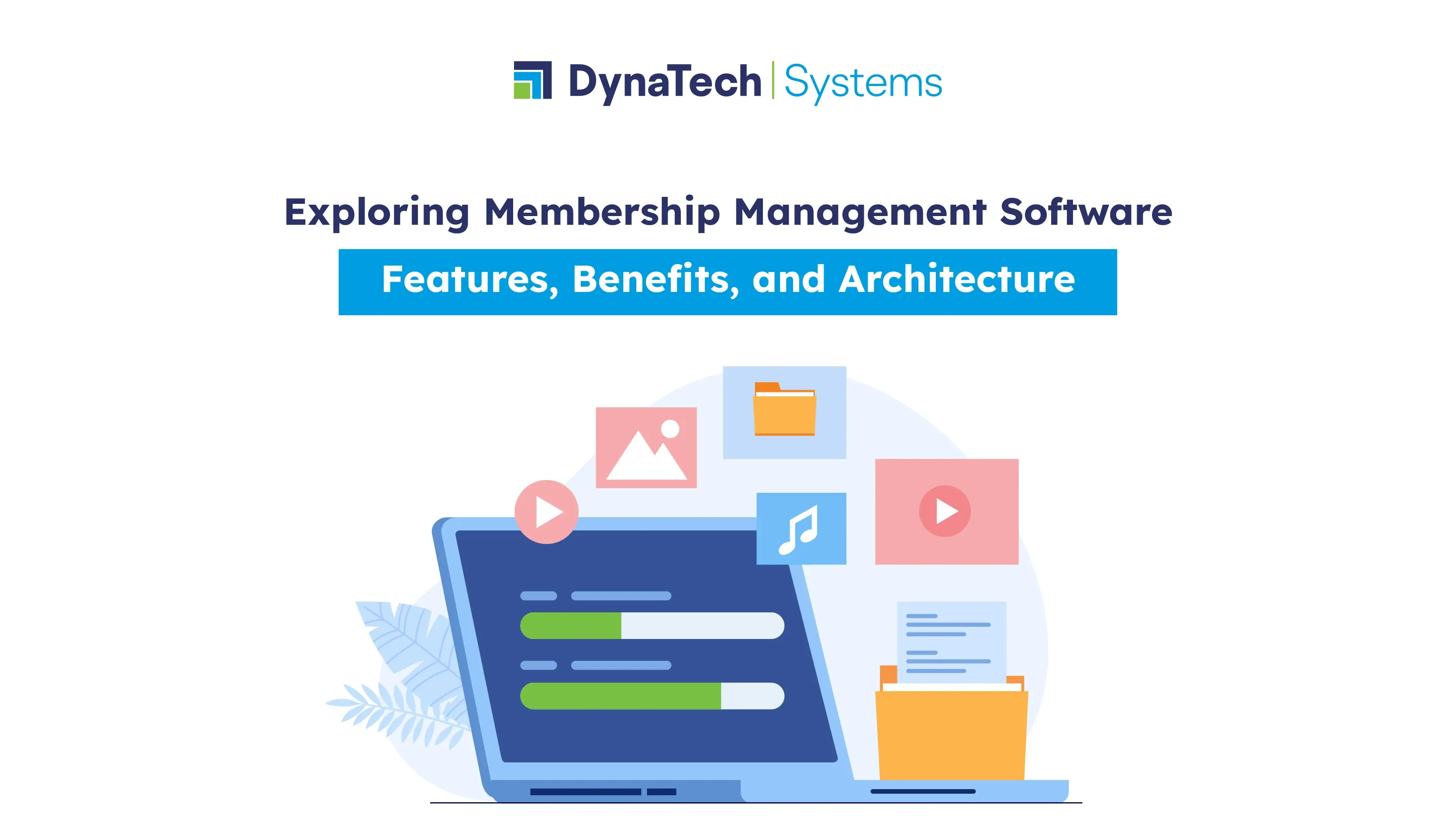Managing administrative tasks for sports clubs, workshops, professional associations, charities, and non-profit communities can be a tedious and time-consuming process. Fortunately, specialized membership management software can make these tasks more enjoyable. With features such as scheduling and member registration, you can save time and focus on your primary activities.
Understanding Membership Management Software
The fundamental task of Membership management software is to centralize the administrative and communication activities with its members and the whole organization. This software creates a virtual environment where members can communicate with one another and administrators, making it easier to resolve organizational issues.
Membership organizations, clubs, communities, and events can effectively manage their activities and operations in the digital space by utilizing specialized software applications. This type of software goes by several names, including administration of memberships computer program, software for association management, club management solution, and software for managing online communities.
Essential Membership Software Features
Membership management software enables the organisations to:
1. Drive effective community engagement
This Membership software provides a comprehensive solution for managing individuals, groups, and entire enterprises. You can manage chapters and committees, analyze performance, and process membership performance in a single location, with less time and greater flexibility.
2. Simplify dues collection
You can collect the dues via mobile payment processing, and with intuitive tools, you can monitor fundraising activity, process donations and pledges efficiently, and assess members’ performance over time. There are no signs of a reversal in the increasing cashless payment options trend.
3. Create and host events with maximum participation and influence
Register members, publish schedules and agendas, and conduct polls and surveys for streamlined event management. Whether your events are in-person, completely virtual, or hybrid, having the appropriate software and communication tools ensures maximum participation throughout the entire event planning and execution process.
4. Seamless Integration with latest as well as existing systems
Advanced membership software can connect to other systems via an open application programming interface (API), such as marketing software, cloud-based accounting software, event management tools, and mobile apps.
Create a robust foundation for online learning, commerce, member certification, member management, event management, communications, and fundraising by integrating additional applications.
5. Improve marketing and fundraising with insightful analytics
The experience across multiple organizational levels is powered by fully integrated membership management software with real-time data that informs managers of crucial insights into membership and fundraising activities. Leverage the power of analytics with tools that measure membership activity and engagement to provide insightful, action-enhancing data.
Benefits of Membership Application
With the above-mentioned features, the membership application offers three principal business advantages:
1. Enhanced Efficiency
Using the power of automation provided by membership software, you can expedite administrative processes and day-to-day managerial tasks, resulting in increased business efficiency and output.
A cloud-based membership software is even more efficient as it provides ease of connectivity, no installation and maintenance concerns, and the scalability to accommodate variable numbers of operations across multiple offices.
2. Increased Community Participation
To gain member trust and loyalty, it’s important to make sure that members understand the benefits of their membership. Members are more likely to participate in an organization’s activities when they receive valuable services and opportunities.
Membership digital systems provide various digital membership capabilities, such as private groups and online portals for discussing industry news, as well as individually tailored calendars and training plans to encourage member participation and increase their interest in your community. These capabilities are made possible through built-in features and integrated third-party systems and services, including CRM, CMS, payment systems, and various applications.
3. Assured Data Protection
Since communities utilize their members’ personal information, they must provide impeccable data security. Using club management software is effortless. These solutions provide advanced security features, such as authentication, encryption, security protocols, and secure cloud storage, to ensure the integrity of sensitive data.
Membership Management Software Architecture
Regarding membership and billing, the Membership Management Software Architecture has you covered. In addition to new member sign-ups and renewals, the software should also deal with certificate issuance, tax practitioner registration, and member compliance.
The architecture of the software should be modularly designed to improve its adaptability, scalability, and maintainability.
1. Billing Module
Manages the billing process for members, handling tasks such as billing runs, penalty runs, trial billing runs, partial billing runs, and re-run error invoices. Integration with the finance system ensures that invoices are processed accurately.
2. Membership Application Module
Handles new member applications. This module is responsible for receiving application details from the portal, generating a proforma invoice for payment, and handling the validation and approval of member applications. It should be integrated with electronic fund transfer (EFT) and credit card payment systems to enable payment.
3. Invoice Generation Module
Responsible for raising invoices for members. It should handle case management, invoice details submission, case validation, invoice validation, and approval, invoice PDF upload on the portal, and CC/EFT payment processing.
4. Invoice Cancellation Module
Handles invoice cancellation requests. The modules should be able to automatically generate canceled invoices and credit note PDFs for uploading on the portal. Its module should integrate with the finance system to ensure canceled invoices are processed accurately.
5. Integration Module
Integrates the software with other systems. It should handle customer and address integration, auto-fill addresses using Google API, invoice integration, EFT payment integration, CC payment integration, and product configuration.
6. Membership Reinstatement Module
Handles membership reinstatements. It would receive application details from the portal, process charges between the portal and Microsoft Dynamics 365, validate and approve member applications, and integrate invoices with the finance system.
7. Membership Practice Registration Module
Handles membership practice registrations. It would receive application details from the portal, generate a proforma invoice for payment, handle payment processes, validate and approve member applications, and integrate invoices with the finance system. It should also handle the renewal of practice.
8. Membership De-registration Module
Handles the de-registration of members. It should set up batches for processing, issue warning to batches, handle invoice cancellations, de-register members, and integrate invoices with the finance system. The module should also be responsible for limiting rights on the portal.
9. Certificate Issuance Module
Handles the issuance of replacement certificates. It should be able to handle certificate request submissions, request validation, request fulfillment, certificate numbering (legacy + auto), certificate issues, e-certificate integration with third-party, e.g., Credly, and physical certificate issues and dispatch.
10. Tax Practitioner Module
Handles the registration and de-registration of tax practitioners. It should handle data migration, tax practitioner registration requests, tax practitioner registration acceptance, de-register request submissions, request process, and payment adjustment.
11. Member Compliance Module
Handles member compliance. It should be able to handle the declaration of compliances, evidence submission, and verification.
12. Query Management Module
Handles queries via case management. It should be able to auto-clear and assign queries and resolve them accordingly.
Conclusion
Our Membership Management Software provides a comprehensive solution for managing your organization’s membership, billing, and compliance aspects.
Our software is designed with the user in mind, and we have taken great care to ensure that all functions are easy to use and intuitive. From submitting new member applications to raising invoices and managing compliance, it offers a human-like experience that makes managing your membership base a breeze. Try integrating other tools like SAP and Salesforce with our Membership Management Software to reap maximum benefits.




























